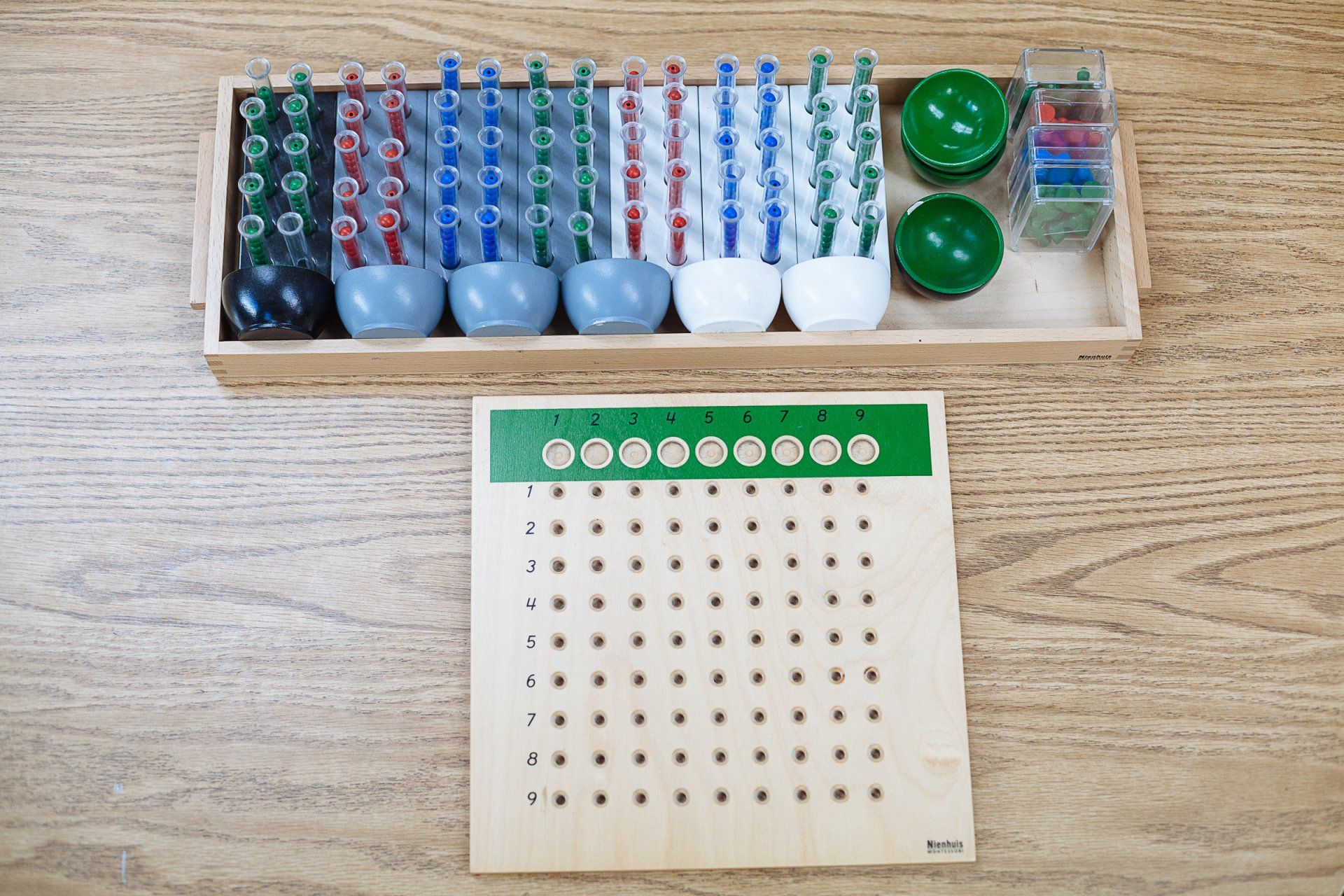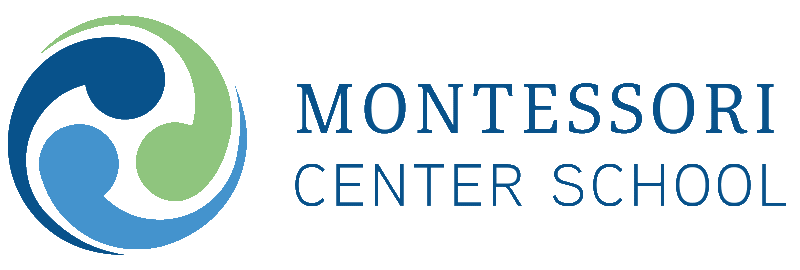Montessori Terminology
A Montessori glossary

Dr. Maria Montessori introduced many new terms and concepts to describe how children grow and learn. These terms are still widely in use today in the Montessori community. You may encounter these terms as you learn about the Montessori method of education.
absorbent mind: From birth through approximately age 6, the young child experiences a period of intense mental activity that allows her to “absorb” learning from her environment quickly and easily without conscious effort.
concrete (versus abstract): This refers to a type of learning and thinking experienced by younger children. When a child explores a skill by using specially designed materials, they are likely understanding the skill concretely. As they deepen their understanding and are able to comprehend the skill without the use of materials we refer to this as abstract. For example, a six-year-old using the stamp game to add numbers into the thousands is working concretely, but an eight-year-old who completes the same calculation on paper without materials is working abstractly.
control of error: Montessori materials are usually autodidactic, meaning the child is able to teach themselves. Most materials are designed with a control of error, or some type of mechanism that allows the child to recognize on their own whether they have made a mistake. This allows for immediate correction and a sense of empowerment for the child. Your child’s guide can show you many examples of this.
cosmic education: The Montessori elementary curriculum is based on the concept of cosmic education. Based on the developmental needs of children aged 6-12 years, as well as the Montessori aim to develop citizens that are more deeply connected with the earth, many of the lessons and units of study teach the interconnectedness of all things. This allows children to have a framework in which they may discover themselves and their place in the universe.
cultural subjects: This refers to the studies of science, history, and geography.
freedom within limits: Montessori classrooms are carefully and thoughtfully designed to encourage children to move about freely and choose their own work, within reasonable limits of appropriate behavior. Those limits are the classroom ground rules, and enable children to exercise their own free will while ensuring that their chosen activities are respectful of others and their environment.
grace and courtesy: A specific area of study during the primary (ages 3-6) years, this aims to teach children how to appropriately interact with others. While they receive formal lessons during these years, the work is continued (although utilizing a more flexible format) throughout their Montessori education.
indirect (versus direct) preparation: Learning activities that lay a foundation for future skills without explicitly teaching them are considered indirect preparation. For example, our Primary students use a small tool for pin punching (perforating pieces of paper into specific shapes) that allows them to develop their fine motor skills and finger grip in preparation for the physical act of writing.
Mixed-age grouping (or multi-age grouping): One of the hallmarks of Montessori education is that children of mixed ages work together in the same class. Age groupings are based on the Planes of Development as identified by Dr. Maria Montessori. Multi-age groupings enable younger children to learn from older children and experience new challenges through observation; older children reinforce their learning by teaching concepts they have already mastered, develop leadership skills, and serve as role models. Because each child’s work is individual, children progress at their own pace; there is cooperation rather than competition between the ages. This arrangement mirrors the real world, in which individuals work and socialize with people of all ages and dispositions.
normalization: Once a child has had time to adjust to a Montessori environment, they begin to joyfully select their own work, stay engaged, and interact peacefully with others. When they achieve this state we refer to the child as normalized.
parallel play: Children under the age of six tend to be more focused on their environment than on their peers (which shifts dramatically during the elementary years). When young children work or play beside one another while actually focusing on their individual pursuits, we call this parallel play.
planes of development: After years of observing children with the perspective of a scientist, Dr. Maria Montessori noticed clear patterns and characteristics. While acknowledging the definite variation between individuals, she organized her findings into four planes of development, and based her educational methods on them.
practical life: This subject is given just as much weight in Montessori schools as we give to traditional academic subjects like math and language. Practical life can include teaching children to care for their environment, others, and themselves. Lessons are wide ranging; our students nurture plants, wash dishes, practice greeting others, sweep spills, and prepare food.
prepared environment: The term we often use in lieu of “classroom”, our guides dedicate hours of careful and intentional adjustments so that the space serves as a teacher for children. In Montessori education, one way independence is achieved is by preparing an environment in which the children are able to care for and learn by themselves, with less direct dictation from adults.
sensitive period: Dr. Montessori noticed and theorized that there are certain periods during a child’s development during which they are primed to engage in specific skills. Once that time has passed, learning such skills is not impossible, but the natural drive to do so declines, making mastery much more challenging.
sensorial: An area of study during the first plane of development (newborn to age six), in which children work to refine a wide variety of senses. There are Montessori materials that have been specifically developed to aid in this process.
work: In Montessori environments, the lines between play and work are blurred. We tend to view a child’s actions through the lens of development and learning, so that even the most seemingly mundane of tasks serves an important purpose and is considered work.
work period/work cycle: This is the term given to a dedicated period of time during which Montessori students work independently and receive individual and/or small group lessons with a guide. Depending upon the school and the age of the children, it can range anywhere from two to three hours. Dr. Montessori believed such a lengthy stretch of time was critical to allowing children to become deeply engaged in their work.
Programs
Montessori Center School admits students of any race, color, religion, national and ethnic origin, gender identity, and sexual orientation to all rights, privileges, programs and activities general recorded or made available to students at the School. It does not discriminate on the basis of race, color, religion, national and ethnic origin, gender identity or sexual orientation in the administration of its educational programs, admission and tuition assistance policies, and athletic or other school-administered programs. Non-Profit Education Organization, License No. 426205239


